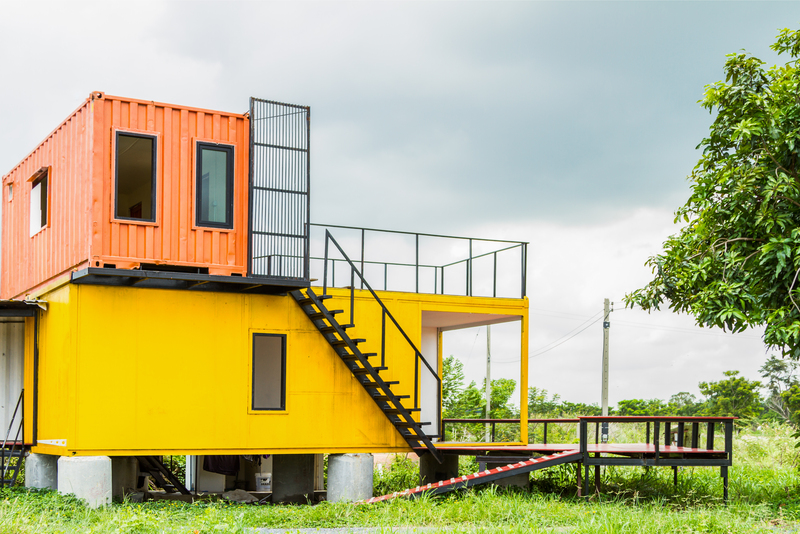Creative Actions to Slash Household Waste
As environmental awareness continues to rise, households across the globe are seeking innovative and sustainable ways to minimize their daily waste. If you're looking to slash household waste, embracing creativity and practical actions is key. This comprehensive guide explores unique, actionable strategies that will significantly reduce your environmental footprint--right from your home.

Why Cutting Household Waste Matters
Millions of tons of waste end up in landfills annually, leading to pollution, loss of resources, and greenhouse gas emissions. Reducing household waste not only conserves valuable materials but also saves money, fosters a healthier environment, and encourages a culture of responsibility. By integrating clever solutions into your routine, you can create a measurable impact and inspire others to follow suit.
Understanding Your Household Waste
Before diving into creative actions, it's crucial to analyze what goes into your trash each week. Common household waste items include:
- Food scraps and expired products
- Packaging materials (plastics, cardboard, and paper)
- Plastic bags and wraps
- Single-use items (cups, plates, utensils)
- Textiles and clothing
- Electronic waste
- Cleaning products and containers
With awareness comes opportunity--once you know your main sources of waste, you can target them with creative solutions.
Innovative Ways to Slash Household Waste
1. Rethink Food Practices
- Meal planning magic: Plan your weekly meals and buy only what you need. This minimizes food spoilage and impulse purchases.
- Love your leftovers: Transform yesterday's meal into something new--think soups, casseroles, or stir-fries. Get creative and challenge your culinary skills!
- Compost with style: Set up a compost bin for veggie peels, coffee grounds, and eggshells; even small spaces can accommodate compact composters or vermicomposting with worms.
- Regrow kitchen scraps: Green onions, lettuce, basil, and carrots can be regrown from kitchen leftovers, providing endless fresh produce at home.
2. Smart Shopping for Sustainable Living
- Bulk buying brilliance: Purchasing pantry staples in bulk reduces packaging waste and saves money.
- Choose package-free: Support zero-waste or refill stores. Bring your own reusable containers--jars, bags, and bottles.
- Reusable alternatives: Switch from disposable bags and wraps to beeswax wraps, cloth bags, and silicone lids.
- Opt for quality: Invest in durable goods that last, from kitchenware to storage containers. Avoid single-use plastics at all costs.
3. Upcycling and Repurposing Household Items
Don't toss it--reinvent it! Creative upcycling breathes new life into "waste" and helps slash household waste creatively:
- Glass jars become storage for spices, screws, or cute DIY gifts.
- T-shirt yarn: Cut old shirts into strips for plant ties, crafts, or even rugs.
- Egg cartons serve as seed starters, jewelry organizers, or children's art projects.
- Cardboard boxes can be transformed into drawer dividers or creative toys for kids and pets.
- Wine corks make excellent bulletin boards or plant markers.
4. Swap, Share, and Community Engagement
Collaborate with neighbors and friends for:
- Clothing swaps: Update your wardrobe without adding to landfill or buying new clothes.
- Tool libraries: Borrow rarely-used items, such as drills or lawn mowers, from local sharing groups instead of purchasing your own.
- Buy Nothing groups: Join online communities to give away or request items for free--keeping goods in use and out of the trash.
- Carpooling and ridesharing reduces emissions, as well as the waste generated by car maintenance supplies.
5. Declutter Mindfully--Don't Just Throw Away
- Donate wisely: Give clothes, books, toys, and electronics in good condition to charitable organizations or shelters.
- Host a community garage sale: Let your "trash" become someone else's "treasure."
- Repair before you replace: Mend clothes, fix electronics, patch furniture, or find tutorials online to breathe new life into once-loved items.
Creative Alternatives to Everyday Household Waste
6. Embrace Minimalism and Mindful Consumption
Less is more. By embracing minimalism, you automatically reduce future waste:
- Assess your true needs before buying.
- Consider the lifecycle of every product--how will it eventually be disposed of or recycled?
- Prioritize multipurpose items that reduce the need for duplicates.
7. Zero Waste Bathroom and Cleaning Routines
- Switch to bars: Bar soaps, shampoos, and conditioners cut down on plastic bottles.
- Bamboo and metal options: Use bamboo toothbrushes and stainless steel razors for a sustainable touch.
- DIY cleaning products: Simple mixes of vinegar, baking soda, and essential oils are effective, safe, and minimize packaging waste.
- Washable cloths replace paper towels: Old t-shirts and towels can become reusable cleaning rags.
8. Rethink Your Approach to Paper Waste
- Paperless bills and statements: Go digital whenever possible, saving paper and reducing clutter.
- Reuse envelopes and one-sided paper: For shopping lists, kids' art, or scrap notes.
- Compost shredded paper: Paper is a valuable "carbon" ingredient for compost bins.
9. Sustainable Kitchen Practices
- Buy ugly produce: Rescue "imperfect" fruits and veggies that would otherwise be discarded.
- Preserve the bounty: Freeze, can, or dry surplus food to prevent spoilage and reduce waste.
- Reusable coffee pods and filters: Say goodbye to single-use coffee capsules for good!
10. Get the Family Onboard: Fun & Games
- Make it a challenge: Use apps to track waste or hold competitions to see who can create the least trash each week.
- Eco-friendly crafts: Organize family crafting sessions using household "junk"--from robots made of boxes to bottle cap mosaics.
- Composting with kids: Teach little ones about food cycles and soil health by letting them help with the compost bin.
Effective Strategies for Dealing with Waste Streams
Recycling Right: Avoid "Wish-cycling"
- Know your local rules: Not every item with a recycling symbol is accepted in every region.
- Clean containers: Food residue can contaminate entire recycling loads.
- Don't bag recyclables: Place them loose in the bin; plastic bags often jam recycling machinery.
Hazardous Waste: Safe and Responsible Disposal
- Safely dispose of batteries, paint, electronics, and chemicals: Many towns hold hazardous waste collection days or have drop-off sites.
- Collect and recycle e-waste: Old phones, printers, and cables can often be recycled for free at electronics retailers.
Creative Approaches to Textile and Clothing Waste
- Repair, alter, or upcycle: Turn jeans into shorts, t-shirts into tote bags, or patch worn clothes for continued use.
- Support textile recycling programs: Major retailers and charities often collect old clothes for recycling into rags or insulation material.
Tech, Apps & Gadgets That Help Slash Household Waste
1. Inventory Tracking Apps
Avoid doubling up by using apps to manage your pantry, fridge, and freezer. This reduces food waste and helps you stay organized.
2. Compost Sensors and Smart Bins
Track compost progress, minimize odors, and learn which items break down best with smart composting solutions.
3. Reusable Smart Labels
Track expiry dates on food containers or leftovers with erasable or digital labels.
4. Swap and Freecycling Apps
Platforms dedicated to sharing, swapping, or giving away household items keep valuables in circulation and out of landfills.
Empowering Kids and Teens in Waste Reduction
- School lunch hacks: Replace cling film with reusable wraps or containers and include cloth napkins.
- Zero-waste birthday parties: Craft DIY decorations from recycled materials and opt for digital invitations.
- Encourage school clubs: Join or create green clubs for recycling drives, clean-ups, and sustainability workshops.

Barriers to Reducing Household Waste--and How to Overcome Them
- Busy schedules: Start small. Pick one new habit to focus on each week.
- Lack of storage: Prioritize multi-purpose storage solutions and compact composters.
- Confusion about recycling: Reference your local government's recycling guide regularly, and when in doubt, ask.
Conclusion: Making Waste Reduction a Joyful Journey
Slashing household waste doesn't have to be a chore--it can be a creative, rewarding lifestyle shift that benefits both your family and the planet. By embracing these innovative strategies and rallying your household around this important mission, you'll quickly notice a drastically lighter trash load, increased savings, and a deeper sense of environmental pride.
Remember, every little action adds up. Your efforts not only minimize your own waste but serve as a catalyst for change in your wider community. Let's slash household waste creatively--starting today!